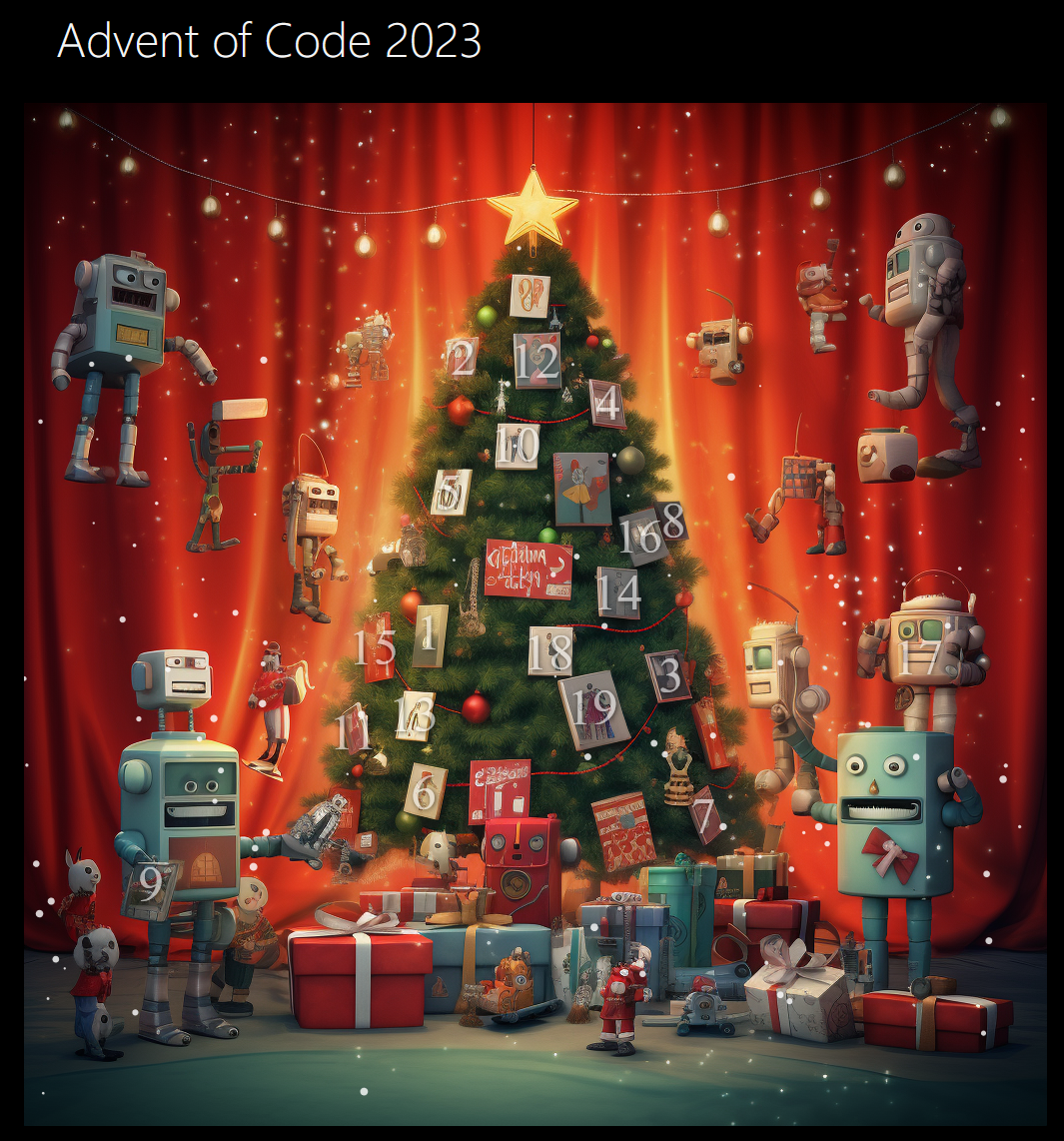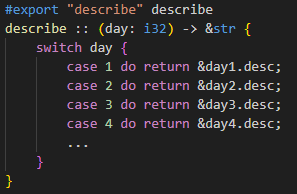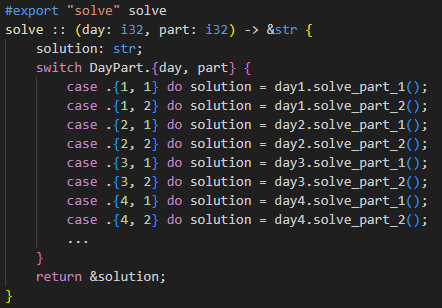Advent of Code 2023
With perfect timing for the beginning of Advent of Code 2023, a post appeared on Hacker News introducing a new programming language called Onyx. This language compiles to WebAssembly which means it can be called from an HTML / JS website or even a server-side WebAssembly runtime. The purpose of attempting Advent of Code is to challenge onself so why not make learning a new language part of that challenge?
A Framework for a Puzzle Solving
Since my Advent of Code solutions would be compiled to WebAssembly, it made sense to build a webpage with an interface around each solution. Sticking with the advent theme, I generated an image of a “coding inspired advent calendar” with Midjourney with a numbered window linking into each solution:

Clicking on a window brings up a description of the problem with links that call through to the compiled Onyx solution.

Onyx API
In Onyx, I exported two functions, one to return the description of a given problem, and another to return the solution.


With this entry point, I delegate to an Onyx module for that day’s solution.
Papercuts
In hindsight it probably was not a great idea to choose a brand new programming language to try to implement the tricky algorithms required by AoC. Often I would have an idea of how to solve the problem only to get the wrong solution. I would often spend hours debugging with print statements only to find a bug in the compiler would mean my variables were in the wrong type. In fact, during the first half of the month I raised roughly one bug per day in the project’s Github of varying severity. In addition to actual bugs, the project lacked documentation of certain features. Having said all that, I cannot praise Onyx’s author Brenden Hansen enough for his support answering all of my questions on Discord and making fixes to the issues I had with Onyx quickly.
Visualisation
An additional reason to build a framework around my Advent of Code solutions was to experiment with visualisation for some of the problems. In this example, the problem requires solving a maze using specific rules around when you can turn left or right.
This works by allocating a chunk of memory in Onyx and exporting a pointer to it. Then in Javascript, I reference this chunk of memory as the location for the image data in a canvas:
const canvasData = wasmByteMemoryArray.slice(canvasRef.canvasPointer, canvasRef.canvasPointer + canvasRef.canvasSize);
const canvas = document.getElementById("solutioncanvas");
const ctx = canvas.getContext("2d");
const imageData = ctx.createImageData(canvas.width, canvas.height);
imageData.data.set(canvasData);
ctx.putImageData(imageData, 0, 0);
This means in order to draw on the canvas, you have to manually update the bytes representing the pixels one by one. There are no drawLine
or drawText functions available in Onyx; everything must be done by hand. I even implmented a basic text renderer so I could output
debugging information.